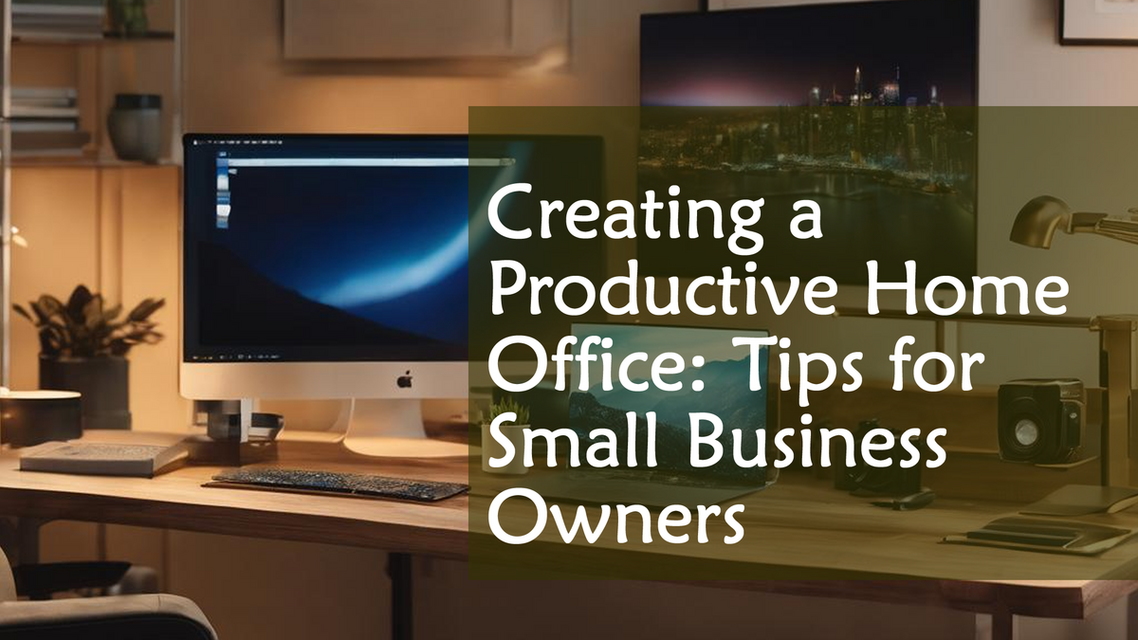
Creating a productive home office involves more than just setting up a desk. It’s about optimizing your space, tools, and environment to boost focus, efficiency, and well-being. Here are the top tips for creating a productive home office:
1. Choose the Right Location
- Quiet and Separate Space:
- Select a space away from distractions like family, pets, or noisy areas of the house. Ideally, use a room with a door or a dedicated area to signal the start and end of your workday.
- Good Lighting:
- Ensure the area has natural light to improve mood and focus, or invest in quality task lighting (e.g., adjustable desk lamps) to reduce eye strain.
2. Invest in Ergonomics
- Comfortable Chair:
- Choose a supportive, adjustable chair to prevent back pain and promote good posture.
- Proper Desk Height:
- Ensure your desk and monitor are at eye level to prevent neck strain. A sit-stand desk or a monitor stand can help achieve this.
- Keyboard and Mouse:
- Use an ergonomic keyboard and mouse to reduce strain on your hands and wrists. Consider a split or vertical mouse for added comfort.
3. Declutter and Organize
- Minimalist Approach:
- Keep only the essentials on your desk: computer, notepads, pens, and personal items. A clean desk fosters a clearer mind.
- Storage Solutions:
- Use shelves, filing cabinets, or drawer organizers to store documents and supplies out of sight but easily accessible.
- Cable Management:
- Tidy up cables with cable clips or a cable management box to reduce clutter and keep your workspace organized.
4. Optimize Your Technology
- Fast and Reliable Internet:
- Ensure a high-speed internet connection for smooth video calls, downloads, and cloud access. Consider upgrading your router or using a wired connection if Wi-Fi is unreliable.
- Quality Devices:
- Invest in a reliable laptop or desktop, and quality peripherals like a webcam, microphone, and speakers for virtual meetings.
- Software Setup:
- Streamline your work tools by using cloud storage (e.g., Google Drive, Dropbox), collaboration tools (e.g., Slack, Microsoft Teams), and task management apps (e.g., Asana, Trello).
5. Personalize Your Workspace
- Incorporate Personal Touches:
- Add items that motivate you, like plants, artwork, or personal photos. However, avoid over-decorating, as too many distractions can reduce focus.
- Comfort Items:
- Have items that make you comfortable, like a cozy blanket, a good chair cushion, or an ergonomic wrist rest.
6. Create a Productive Atmosphere
- Noise Control:
- If you’re easily distracted by noise, invest in noise-canceling headphones or a white noise machine to block out distractions.
- Keep It Comfortable:
- Maintain a comfortable room temperature (neither too hot nor too cold) to avoid discomfort and maintain focus.
- Inspire Creativity:
- If creativity is key to your work, add an inspirational corner or objects (e.g., books, journals, or mood boards).
7. Set Clear Boundaries
- Designate Work Hours:
- Set specific work hours to help establish a routine and maintain work-life balance. Use a calendar or planner to keep track of meetings and deadlines.
- Create a “No Distraction” Policy:
- Let household members know when you’re working and need uninterrupted time. Consider using a physical sign (e.g., a “Do Not Disturb” sign) during critical hours.
8. Maintain Regular Breaks and Movement
- Take Breaks:
- Follow the Pomodoro Technique or another time-blocking method (e.g., 25 minutes of focused work followed by a 5-minute break). Use the break to stretch, hydrate, or take a quick walk.
- Exercise and Movement:
- Invest in a standing desk, or regularly get up and stretch to avoid sitting for long periods. Small exercises or yoga sessions during breaks can reduce fatigue.
9. Stay Organized with Systems and Routines
- Daily Planning:
- Begin your day by reviewing your tasks and prioritizing the most important ones. Apps like Todoist or Trello can help you organize daily tasks.
- Keep Workflows Simple:
- Develop streamlined workflows for common tasks, reducing decision fatigue and boosting efficiency.
10. Stay Social and Connected
- Virtual Team Interaction:
- Schedule regular check-ins with coworkers or teammates to maintain communication and collaboration. This helps you feel part of a team and ensures accountability.
- Social Breaks:
- Take time for social interaction with family or friends outside of work hours to maintain a healthy work-life balance.
Bonus Tips
- Posture Check:
- Set reminders to check your posture throughout the day, especially if you’re working long hours. Good posture supports long-term productivity and health.
- Music for Focus:
- Consider playing background music that enhances focus. Classical, lo-fi, or instrumental music can help with concentration.
- Task-Specific Zones:
- If possible, create distinct zones within your home office: one for focused work, another for creative brainstorming, and one for meetings or video calls.
By thoughtfully designing your home office environment, you can create a space that enhances productivity, creativity, and comfort. The goal is to strike the right balance between functionality, organization, and personalization.




